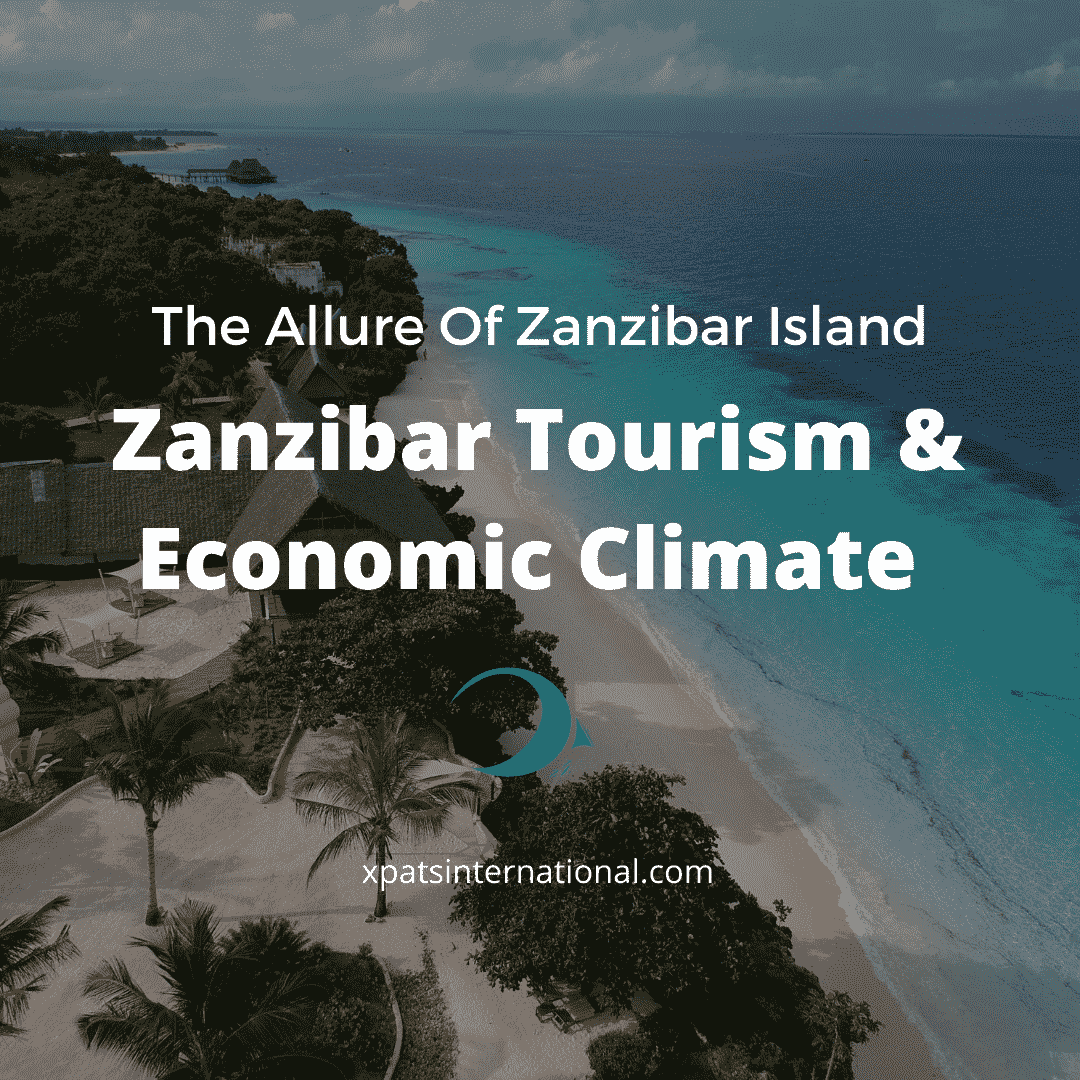Zanzibar is an island located off the coast of East Africa. The Zanzibar archipelago consists of Unguja (commonly known as Zanzibar) and Pemba, as well as a number of islets that surround the area. Although there is an autonomous government for topics not covered by the union agreement, the island is part of the United Republic of Tanzania.
The area is Africa’s largest island and is separated from the mainland of Tanzania by a canal 36 kilometers (22.5 miles) wide at its narrowest point. It is located between the latitudes of 5° 40′ and 6° 30′ South and the longitude of 39° East, covering an area of around 1,660 square kilometers (640 square miles). Zanzibar Island is approximately 85 kilometers (53 miles) long and 39 kilometers (24 miles) wide at its widest point.

The word Zanzibar connotes a place of tranquillity, natural beauty, an exotic sense, and a return to history. The islands of Zanzibar (Unguja, Pemba, along with the neighboring islets that comprise the island) are unquestionably among the most beautiful in the world. It is a popular tourist destination due to its rich history and beautiful sandy beaches. However setting aside the spectacular attractions that come with the island, one might why — why Zanzibar island is such a popular destination to travellers?
A Brief Zanzibar History
Let’s begin with a short history lesson. For ages, probably facilitated by the Monsoon trade winds, commercial relations have existed between the East African coast and the inhabitants of Arabia, Persia, India, and as far as China. Although the exact dates are unknown, Zanzibar and other East African coastal communities maintained commercial links with their Indian Ocean neighbors as early as the first century AD.

Unlike some researchers who claim that coercion was the norm at the time, Arabic travelers had no political ambitions. They were living in peace, and some of them intermarried with their hosts, further cementing their relationship with the region. With the arrival of Islam in the eighth century, the bond was deepened and East Africa was brought considerably closer to Arabia.
The Culture And People Of Zanzibar Tanzania
It’s no secret that local friendliness and ways of life are important components in making a place welcoming to visitors, and Zanzibar is no exception. Zanzibar has a lengthy history of demographic change and it is debatable who was the first to set foot on her soil. What is known today is that the Wahadimu, Wapemba, and Watumbatu Shirazi clans are among the locals. Other ethnic groups that live in Zanzibar now include Arabs, Asians (Indians and Pakistanis), Comorians, and those from Tanzania’s mainland who are ironically referred to as “Africans.” As a cosmopolitan society, Persian, Arabic, and African traditions have had a significant impact on the culture.

It is easy to conclude that the Zanzibari people are a mixture of mixtures; no group of people claim to be more indigenous or to have more rights than others; the deciding factor for this island is nationality, one’s birthplace, one’s choice of a country to belong to, or to die if necessary. This is one of the many factors visitors flock to the area and establish investments in the island.
The Zanzibar Economy And Natural Resources
At the moment, trade and tourism are the two emerging businesses intended to replace the ailing clove industry. Though agriculture is still the backbone of the Zanzibar economy, its contribution has been falling recently. The clove business, which used to be the largest foreign exchange generator, has been impacted by low global market prices and a number of agronomic problems, resulting in low annual production.

The Spice Islands are the world’s largest producer of cloves. Other spices and fruits of various kinds are constantly plentiful. The archipelago, which is located just below the equator, has a cool tropical climate that encourages the growth of numerous tropical species of flora and wildlife. As it is surrounded by the massive Indian Ocean, its marine resources are among the most abundant in East Africa.
Zanzibar Regions And Popular Destinations
Unguja is the largest island in the Zanzibar archipelago. It houses the government and boasts of having a live history of Zanzibar vividly visible along the small alleyways of Stone Town. Unguja attracts thousands of people each year due to its rich history, importance as the capital of Zanzibar, collection of crystalline sandy beaches, close proximity to Tanzania’s mainland, and is easily accessible by both water and air.

Pemba Island, located north-east of Unguja island, has earned the moniker “the green island” due to its scenic splendor. It is inhabited by the Wapemba ethnic group. Pemba Island has been overshadowed by the prominence of its sister island, Unguja. It does, however, have a long history, but not as exciting as Unguja’s because it has never been the center of any dominating empire. Except for the harshness of Mkama Ndume, the local king with his headquarters in Pujini, Pemba was always ruled by proxy. The Portuguese had constructed an administrative center in Chake Chake, but their power was generally tied to other parts of East Africa.

Pemba, unlike Unguja, does not have easy access to the outside world. The terrain and pristine sandy beaches have not been fully utilized. Pemba is mostly unspoiled, green, and, to put it mildly, pristine. The clove industry is mostly responsible for Pemba’s popularity. The island produces more than 70% of Zanzibar’s clove production.
Travel Advice For Zanzibar Island
Spice tours, tasting local dishes and walking the cobbled streets of the capital’s old quarter, Stone Town, now a World Heritage Site buzzing with colorful back-street markets and local flavors. Then there are the Zanzibar beaches: ideal for anyone looking for a lazy luxury beach vacation. Zanzibar and its outlying islands are home to some of East Africa’s finest beaches as well as a number of its best dive sites.
When is the Best Time to Visit Zanzibar?
The dry season, which lasts from June to October and December to March, is the greatest time to visit Zanzibar. This also corresponds with Tanzania’s peak safari season, making the Zanzibar Archipelago a popular post-safari destination. However, because of its consistent sunshine and mild Zanzibar weather, this tropical island is ideal for visiting most of the year.

Best Zanzibar Accommodation
Zanzibar lodging tends to be a mix of the casual and the exotic, capturing the rich character of the ‘Spice Island.’ There are numerous good hotels, boutique enterprises, and all-inclusive resorts on the island’s famous beaches, but there are also several fine hotels in the center of interesting Stone Town, Zanzibar’s historical capital.

Zanzibar Tours & Holidays
You can’t go wrong with a Zanzibar vacation for an exotic African island experience like no other. Zanzibar tours mix laid-back beach accommodations with a variety of activities and stunning places to provide a culturally rich but ultra-relaxing vacation.
Many guests opt for a Zanzibar tour that combines the island’s beautiful beaches with classic safari destinations – it truly is the ideal way to conclude a Kenya or Tanzania safari. Remember to discover the Spice Island and its diverse culture while in Zanzibar. Zanzibar trips and holidays should contain the following:
- 3 day all inclusive Zanzibar package
- 4 day post safari Zanzibar holiday package
- 5 day special bachelor’s Zanzibar package
- 6 day romantic Zanzibar vacation package; or
- 7 day exclusive family beach holiday package

How To Get To Zanzibar?
Zanzibar International Airport: The sole airport on the island, located in old Stone Town, is served by flights from Nairobi and Dar es Salaam. When you arrive, take a taxi to your hotel or use the shuttle bus provided by your hotel. There are regular flights from Zanzibar to Pemba and Mafia Islands, but you may also take a boat from Zanzibar to Mnemba or Chumbe.



